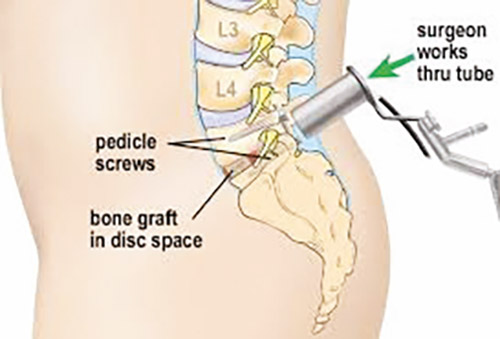
You see it everywhere, on billboards and advertisements, on TV and in magazines. “Minimally invasive surgery” and “robotic surgery” are the latest trends in orthopedic spine surgery. What does this all mean?
Is it just a marketing gimmick or does this have the potential to change surgery for the better? Minimally invasive spine surgery refers to making small incisions and using special retractors that minimize damage to the muscles of the spine. This means less disruption to the muscles of the back, faster healing and smaller scars.
Robotic surgery really should be called robotic-assisted surgery. The surgeon is still performing the operation, but the robot helps make it safer. A spinal fusion typically requires the use of screws and rods. Traditionally the screws were placed into the spine using a live x-ray machine. However, the robot uses preoperative CT scans and x-rays to help guide the screws into the bone with increased accuracy. This lets surgeons make smaller incisions and use larger screws to get good anchor points in the bone.
Like anything else, minimally invasive surgery and robotic surgery are just tools in a surgeon’s toolbox. Patients who may require surgery can have a whole range of needs. Just because a surgeon can do something does not always mean that he should. Talking to and examining patients to understand how they can be helped, carefully reviewing their imaging studies, and taking the big picture into account is important for a surgeon to help choose which tool to use in their toolbox. For me, an orthopedic spine surgeon trained in both traditional techniques and the more modern techniques, minimally invasive and robotic spine surgery is a powerful tool that I use on the right patients. These techniques are more than just a gimmick, but a useful way to make surgery safer and more effective for our patients.









